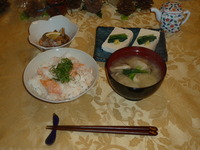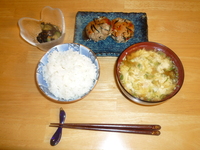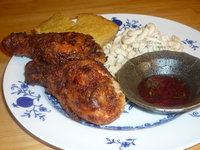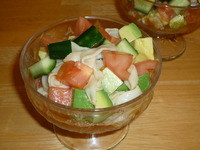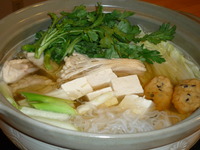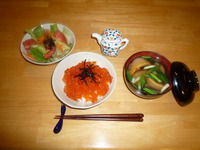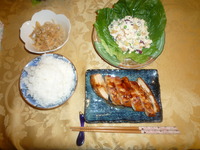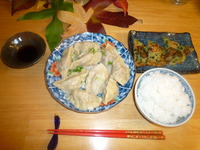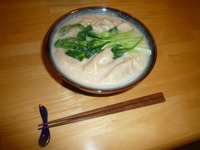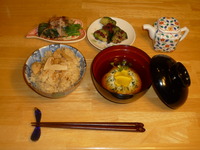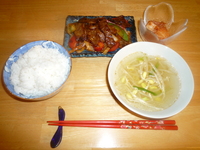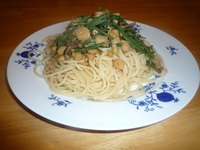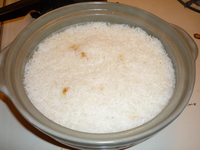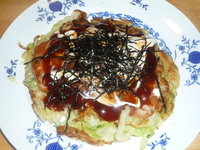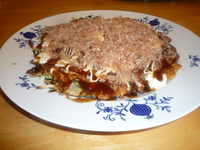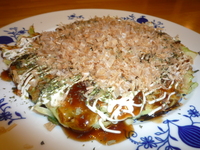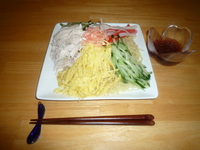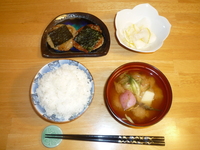Thursday, August 19th, 2010
It's finally time to talk about sushi meshi/shari. Shari is itamae yougo for sushi rice. Japanese chefs use itamae yougo or special terminology for food, especially items relating to sushi.
Sushi rice is difficult to make perfectly but it's not difficult to make decent sushi rice. There are, however a few key steps that are absolutely necessary for decent sushi rice. Most people who have never made sushi rice or regular Japanese rice might see some of these steps as unnecessary but I will point out which ones are a must.
If you have never worked with Japanese rice, please see
Cooking Japanese rice with an electric rice cooker on how to wash the rice. I mention in this post to soak the rice in the water for a minimum of 15 minutes but in the case of sushi rice, I recommend at least 30 minutes.
Ingredients
2 (1/4) cups of Japanese rice
2 (1/4) cups of water
1 10cm piece of dried kombu
* If you don't have kombu and omit it, reduce the amount of water by a little since you'll be adding in sushizu later on.
125 ml of sushizu (sushi vinegar)
Sushizu Ingredients (makes 150 ml)
1/2 cup of rice vinegar
1/3 cup of sugar
1/4 teaspoon of dashi powder (optional)
1 tablespoon of salt
*This recipe should make 150ml of sushizu. Use the reserve when handling the rice. You'll need it to keep the rice from sticking to your fingers and your knife.
Directions
1) Wash the rice (see electric rice cooker directions)
2) Add the kombu to the rice pot and soak the rice in water for a minimum of 30 minutes.(Sushi novices will skip this step but sushi meshi is what makes up the sushi and it should be nice and fluffy. Whatever you do, please don't skip this step. There is plenty of prep work that can be done while it's soaking.)
**Some people will drain the water after washing and let the rice dry but I think it makes the rice dry so I don't do this step.
3) Hit the switch and allow the rice to steam for an additional 5 minutes after it's done to become fluffy. **This is also a necessary step. If you skip this step you may have rice that is not fully cooked. This also helps the rice become fluffy.
4) Make sure the sushizu and fan is ready before the rice is done. You can use an electric fan or hair dryer on the cold setting but for some reason hair dryers feel gross so I like doing it old school with a paper fan. Businesses will typically give them out to people walking around Japan in the summer. The one I use is from a ramen house. I also turn on an ceiling fan to expedite the process.
5) Set the kombu aside and dump the rice in a hanagiri.
6) Poor the sushizu over the rice and allow it to steam for 30 seconds to 1 minute. This allows the rice to absorb the sushizu.
7) Have an assistant ready to switch off with the mixing and fanning. Fan like crazy and mix to cool the rice. (This is another crucial step. You must cool the sushi rice as you mix in the sushizu otherwise the rice will mureru (become mushy). It's also better to work with cooled sushimeshi if you're making temakizushi or makizushi (rolls) because it will keep the seaweed from getting chewy.
8) Cut the rice with the rice paddle. (See video below)
9) Once the rice is cool it's ready to be stuffed, bowled, nigiried and rolled. : )
10) If you're not done with your prep work, lay a clean wet towel over the hanagiri to keep the rice from drying out.
The water line should be exactly up to the 3 since the kombu will soak up some of the water and you'll compensate for this loss by adding in the sushizu later.
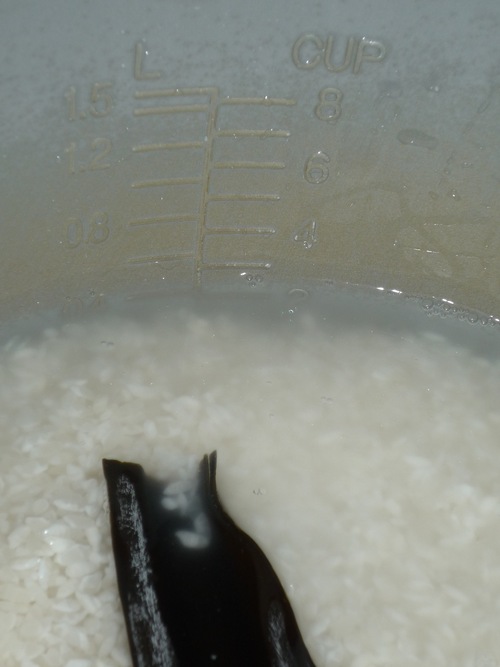
Add the all the sushizu ingredients to a small sauce pan.
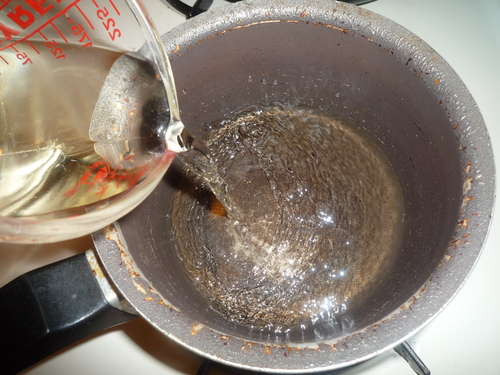
Mix with chopsticks until the sugar and salt dissolves. Once everything has dissolved, turn off the heat immediately and don't let it simmer otherwise the vinegar will mellow out.
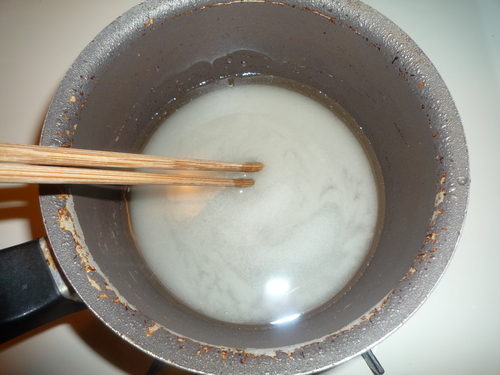
Pour the sushizu into a jar.
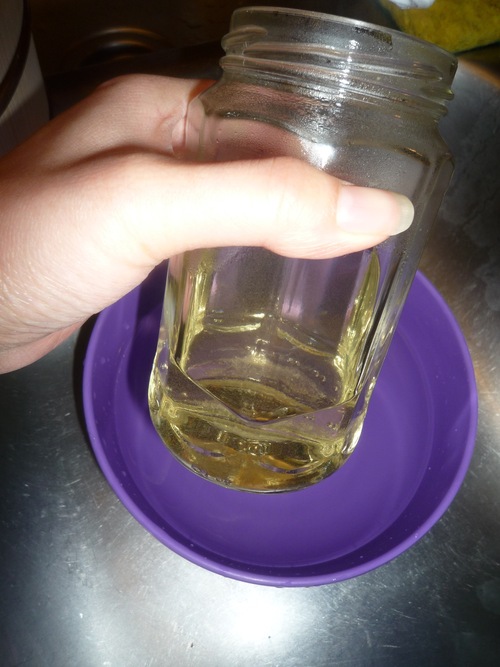
Cool sushizu in a bowl with cold water immediately.
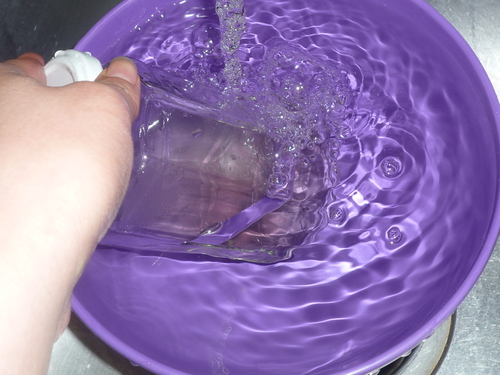
Hanagiri (wooden bowl) is useful for mixing sushi rice.
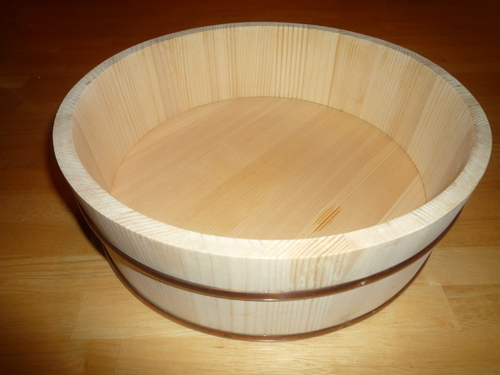
As soon as the rice is ready, take out the kombu and add the rice to the hanagiri.
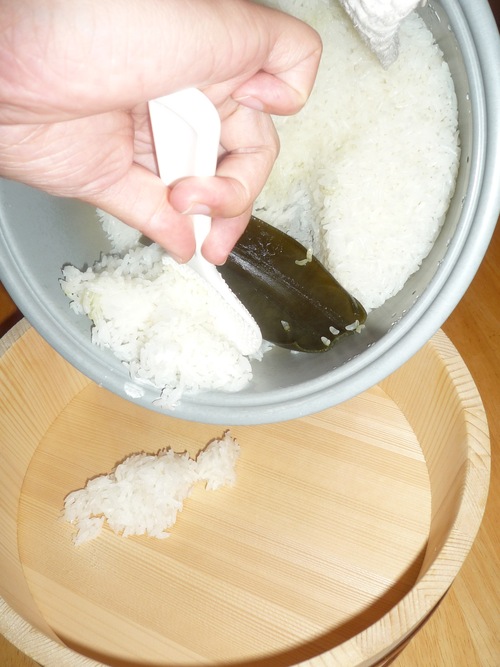
Add the sushizu and let it steam for 30 seconds to 1 minute.
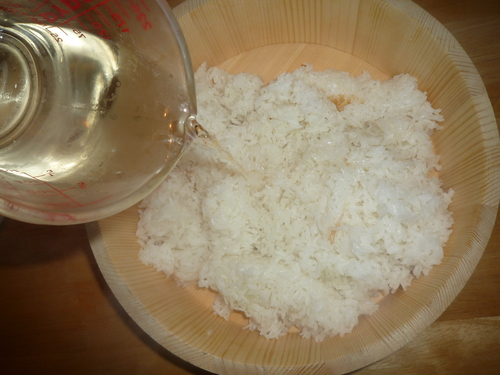
Mix the sushi meshi with a rice paddle and cut the rice. Don't smash the rice with the flat side of the paddle.
Use the reserve sushizu on your fingers or your knife when handling the sushi meshi.
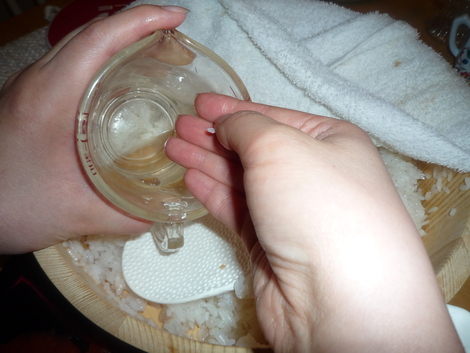
*One thing to note is that the sushi meshi may taste a little too sweet or vinegary while the rice is still warm. Once it has cooled completely, it will taste the way that it should. It's hard not to taste while you're cooking and every time I taste the rice while it's still warm, I say to myself "it's too sweet and there's too much vinegar" and then when it's ready to eat, it magically tastes just right. Therefore, it's always good to measure the sushizu ingredients because it's hard to go off of taste while preparing sushi meshi unless you're a seasoned sushi chef.
